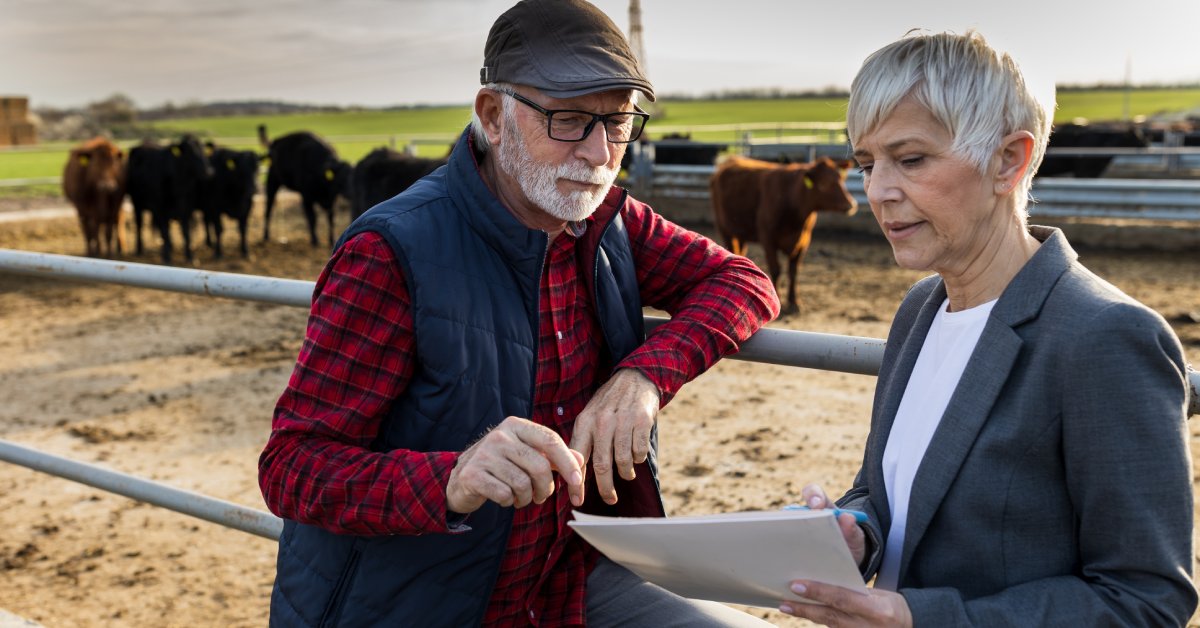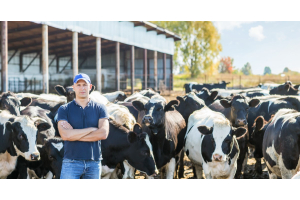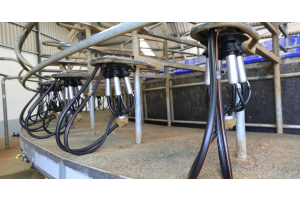Top Challenges Facing Dairy Farmers Today

The agricultural sector is no stranger to challenges, and dairy farming is no exception. Dairy farmers face a multitude of complex issues that significantly impact their operations, from shifting policies to evolving consumer demands. Learn about the top challenges confronting dairy farmers today and how these obstacles are reshaping the industry.
1. Policy Uncertainty
Policy shifts in trade regulations, labor laws, and agricultural assistance programs are causing significant disruptions across the dairy industry. Changes in trade agreements influence milk exports, while adjustments to food assistance programs often impact domestic consumption.
Labor policies also play a crucial role in shaping the workforce dynamics on farms. Farmers must remain informed about legislative developments, as even small-scale changes have a profound impact on their profitability. A proactive approach to understanding and adapting to regulatory changes is key to navigating this uncertain terrain.
2. Labor Shortages
Labor shortages are a pressing issue for dairy farmers, with rising labor costs and changing immigration policies exacerbating the problem. Labor expenses account for an estimated 12% of a farm’s operational costs, making this shortage a significant financial burden.
The arduous and specialized nature of dairy farm work further complicates efforts to attract and retain employees. Many farmers are turning to automated solutions, such as milking robots, to alleviate their dependence on human labor. However, implementing these technologies requires an initial investment, which may be challenging for smaller operations to manage.
3. Market Volatility
Fluctuations in milk prices create a financially unstable environment for dairy farmers. Global trade dynamics, supply chain disruptions, the weather, and other factors frequently contribute to unpredictable market conditions. This volatility makes it difficult for farmers to plan budgets, forecast revenues, or secure steady profit margins.
Diversification of revenue streams and collaborative efforts with cooperatives mitigate some of the risks associated with market instability. Staying informed about market trends and leveraging forward contracts to lock in favorable prices also provides a level of predictability.
4. Transition to Component-Based Pricing
The industry’s move from volume-based pricing to component-based milk pricing created disparities among dairy farmers. Farmers now prioritize protein and fat content over simply maximizing production volumes. While this transition benefits some, farmers with lower-component milk may face reduced revenues despite producing large quantities of milk.
Many farmers are selectively breeding cows to enhance milk composition to stay competitive. Understanding regional pricing strategies and investing in processing adjustments helps farmers adapt to this evolving pricing model.
5. Processing Infrastructure Limitations
The increasing processing capacity reshapes markets by promoting innovation and meeting global consumer preferences, but it also puts downward pressure on prices. Smaller farms often struggle to match the production requirements of large-scale processors.
These limitations encourage an increased emphasis on tailored dairy milk processing equipment to improve milk quality and adapt to specialized output requirements. Finding the right partnerships within the processing chain is essential to bolstering profitability.
6. Export Challenges


International trade barriers and tariffs significantly affected U.S. dairy exports. Retaliatory tariffs from key markets and increasing global competition put dairy farmers in a precarious position. Exports account for roughly 18% of U.S. milk production, meaning disruptions in global trade severely affect domestic operations.
Adopting advanced supply chain strategies and collaborating with trade associations can buffer some of these impacts. Additionally, farmers must focus on producing premium, high-quality products to maintain competitiveness in international markets.
7. Replacement Heifer Shortages
A scarcity of replacement heifers is another pressing concern impacting herd management for many farmers. With rising production costs and fewer incentives to invest in herd expansion, dairy farmers are facing challenges in maintaining optimal herd sizes. This balance has long-term implications for milk production capacity and farm growth.
Selective breeding programs and partnerships with heifer-raising specialists mitigate the shortages over time. Tailored support for small and mid-sized operations ensures that farmers don’t fall behind due to this resource constraint.
8. Bird Flu Impact
The spread of avian influenza, while primarily affecting poultry, caused disruptions for dairy farms in impacted regions. Disease outbreaks increase biosecurity risks, leading to heightened restrictions and operational delays.
Additionally, cross-industry supply chain connections, such as shared feed resources, have further complicated the situation. Farms must strengthen biosecurity protocols and collaborate with veterinarians to mitigate risks during outbreaks. Ensuring compliance with disease management measures will protect farms from the long-term cascading effects of these disruptions.
9. Sustainability Pressures
Consumers are increasingly demanding sustainable practices from food producers, leading to mounting pressure on dairy farmers. While sustainable farming practices do address environmental concerns, they often come with higher operational costs for farmers.
Adopting renewable energy sources, improving waste management systems, and transitioning to regenerative farming techniques are just some steps farms are taking to align with these expectations. Government incentives and partnerships with environmental organizations can help farmers offset costs and implement meaningful changes.
10. Domestic Demand Decline
Domestic demand for traditional dairy products has softened, driven in part by shifting dietary habits and the increasing popularity of plant-based alternatives. The food service industry, a significant market for dairy, has also faced fluctuations in demand due to economic factors.
Farmers are exploring niche product lines, such as artisanal cheeses, organic milk, and value-added products, to stay competitive. Engaging with consumers through educational campaigns about dairy’s health benefits can help rebuild demand and foster trust among modern buyers.
11. Nutrition Program Cuts
Budget cuts to federal nutrition programs, such as SNAP, directly impact dairy consumption in the U.S. These programs are vital for providing dairy products to millions of families, and reductions in funding lead to reduced consumer accessibility.
Farmers and cooperatives may work together to advocate for policy changes and highlight dairy’s nutritional importance. Additionally, partnering with nonprofits and community groups creates alternative pathways to ensure dairy products reach underserved populations.


12. Technological Adaptation
The rapid integration of technology into farming is reshaping the dairy industry. Automated milking systems, precision agriculture, and other innovations enable farmers to address labor shortages, increase efficiency, and optimize production.
However, the upfront costs and learning curve associated with these technologies are significant barriers for smaller farms. Training workshops and subsidy programs may bridge the gap, making advanced solutions more accessible. Farmers who successfully adapt are more likely to remain competitive and sustainable in the long run.
The challenges facing dairy farmers today create a complex landscape that requires adaptability, innovation, and resilience. From navigating global trade uncertainties to staying ahead of market trends, farmers must strategically address these hurdles to remain viable.
By focusing on technological advancements, sustainability efforts, and new market opportunities, the dairy industry may continue to grow and thrive. Consider evaluating opportunities tailored to your operations, such as upgrading dairy equipment or exploring community-driven support networks, to ease these transitions. The path ahead is not without effort, but every proactive step takes you closer to lasting success.










